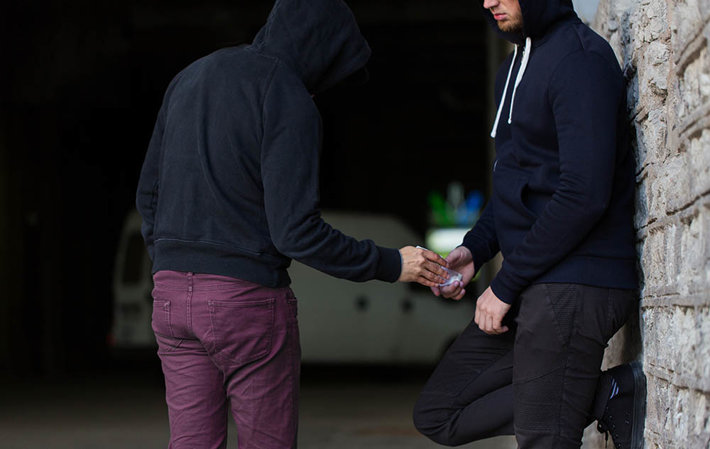Cocaine Today
Cocaine Trafficking Trends Shift Around in Response to Law Enforcement While Cocaine Still Takes Lives and Sends Victims to Rehab

The world of cocaine trafficking has recently gone global. Once, the major flow of cocaine was from South America to North America to feed rapacious US appetites for the drug. It may have been the crack cocaine epidemic in the 1980s that turned law enforcement so violently against the drug. As a result of crack cocaine hitting all the major Eastern urban centers, violence and crime rates rose sharply and new laws went on the books to fight this trend.

The focus of law enforcement finally shifted to the US-Mexican border after the new millennium. Traffickers were using tunnels, specially-built submarines, human “mules,” tractor-trailers, small helicopters, airplanes and private vehicles to bring the white powder across the border and into US cities. Every time the heat got too intense in one region of the US, the trafficking would shift again to a new area. Major conduits have moved from Tijuana to El Paso to Arizona border regions in the last decade.
Still, the Drug Enforcement Administration (DEA), Border Patrol, Coast Guard, local and state police and Mexican military keep fighting the battle on the ground and the sea and in the air. While cocaine consumption numbers seem to be falling in the US, there’s still plenty around for those who want it as evidenced by this small sample of recent news:
- Trenton, New Jersey, 200 grams of cocaine plus other drugs seized near housing projects, March 28, 2012.
- New Jersey police seize 100 grams of cocaine after watching an apparent drug deal take place in an Infiniti. March 20, 2012.
- The UN mailroom in New York City discovers 16 pounds of cocaine in fake diplomatic pouches. January 2012.
- Coast Guard locates custom-built cocaine submarine in Caribbean that was headed north toward the US. The street value of cocaine seized: $180 million. July 2011
But falling numbers have seemingly forced enterprising South American drug traffickers to look for other markets they can expand into. They have found Europe and Australia plus Brazil and Argentina in their own backyards.
The European Connection

European cocaine connections are turning up all over the world as these new trafficking channels are built up. For example, in Peru, three Italians and three British citizens were recently arrested for smuggling cocaine. The British citizens were preparing to transport 65 pounds of cocaine to the UK by hiding them in fire extinguishers and carrying them on a sailboat. In one month, Peruvian authorities seized more than a ton of the drug, establishing Peru as a solid originating point for drugs headed for Europe.
At the other end, Bulgarians seem to be getting into the act, prompting the DEA to open an office in this country to help deal with the problem. In the past, there was not much cocaine in the country, but now its location makes it an excellent hub from which to distribute north into Russia, northwest into Europe or east into Asia.
In the South of France, the idyllic French Riviera and the surrounding countryside have been the site of increasing numbers of cocaine seizures. In February 2012, authorities seized more than 200 pounds of the drug in multiple operations.
The African Connection
It’s been a few years since a burned-out 747 was found in Mali, the apparent conveyance for as much as ten tons of cocaine from South America. It seemed that the plane had been unable to take off from an airstrip and so was unloaded and burned. This and other evidence pointed to a new, strong channel from Venezuela to corrupt and impoverished Western Africa countries and from there on to Europe. It was suspected that Western Africans who participated were being paid in cocaine that they then smuggled to Europe, as more West Africans began to be arrested in Europe with their cocaine shipments.
The head of the UN Office on Drugs and Crime estimated that the African Connection was generating $800 million annually in proceeds for the criminals involved in the cocaine trade. As a result of this efficient trafficking channel, the European cocaine market has expanded nearly four-fold in the last few years.
The Australian Connection
With an existing appetite for stimulants like amphetamines, Australia was a natural outlet for South American drug lords. And it is not one that has been overlooked. After all, a kilo of cocaine that fetches $16,000 along the US border will go for $250,000 in Sydney. Cocaine is being found in cases of beer, lawnmowers or paving stones being shipped to Australia, and in luggage, inside and outside courier bodies and postal packages.
Meanwhile, Back in the US
While consumption has been down for the last few years in the US, it is still taking lives and sending more than 180,000 people to rehab each year. Because of damage to the heart and other organs, it still sends some people to their deaths. Most notably, in March 2012, it was announced that Whitney Houston died from a combination of the damage done to her heart by extended cocaine abuse and drowning. Her heart showed severe narrowing of the arteries, a condition that can result from cocaine abuse. She also had cocaine in her system when she drowned, and the drug was considered a contributing cause of death.
The solution to cocaine abuse will never fully be found in chasing traffickers around the globe. Solving the problem must include effective drug rehabilitation treatment that results in the lasting sobriety of a majority of those completing the treatment. This is the result offered by some 40 Narconon drug rehabilitation centers around the world.
For 50 years, Narconon staff and volunteers have been helping people get clean and sober through this innovative and effective program.
Find out more about the Narconon program.
Resources:
- http://www.nj.com/mercer/index.ssf/2012/03/trenton_police_seize_more_than.html
- http://www.nj.com/mercer/index.ssf/2012/03/county_detectives_find_11g_in.html
- http://news.bbc.co.uk/2/hi/8364383.stm
- http://www.dailystar.com.lb/News/International/2012/Feb-17/163676-cocaine-traffic-expanding-to-europe-says-us.ashx#ixzz1r0dKofMM
- http://www.npr.org/2012/03/02/147821195/mexican-drug-cartel-targets-australia
- http://abcnews.go.com/Health/whitney-houston-death-cocaine-contributed-heart-disease/story?id=15984196
 ®
®